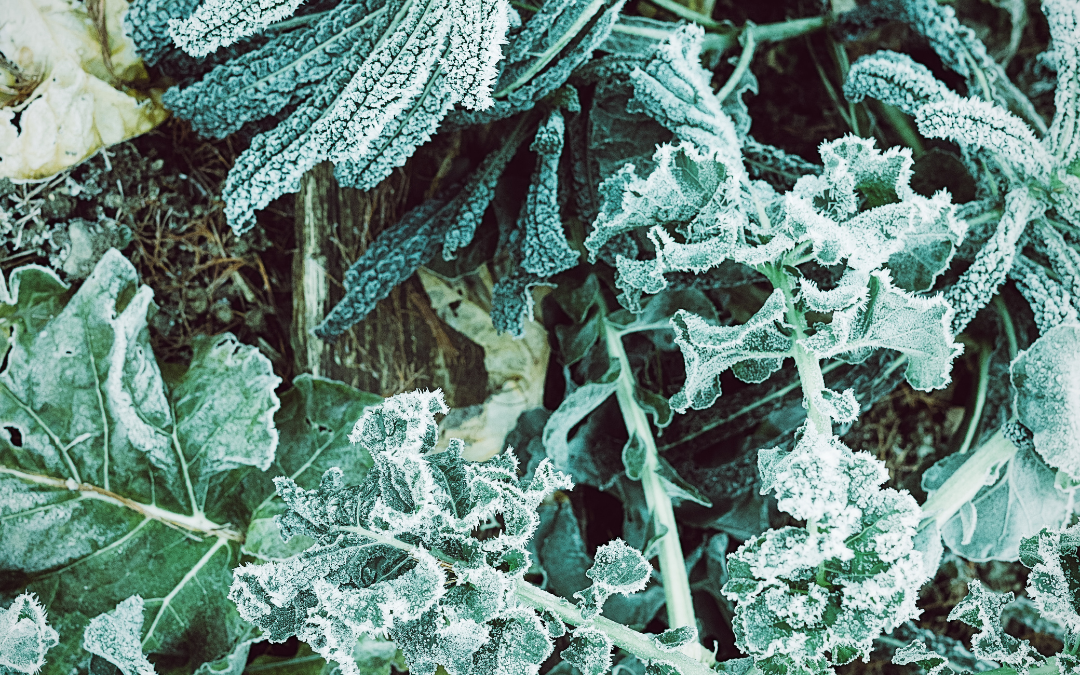
by Wildwood Outdoor Living | Nov 28, 2023 | news
Oh no, can you believe it’s already December? Time flies! Whether you’re an experienced gardener or just starting out, this month can surprise you with its business. Preparing for a successful growing season requires a lot of effort and planning. Not to worry though, in this week’s blog, we’re here to help by providing a helpful to-do list to keep you occupied throughout December.
-
Winter plant protection is providing frost protection for your plants. This can be done by covering them with materials such as burlap or frost blankets, which act as a barrier against freezing temperatures. Additionally, you can create a microclimate around delicate plants by using protective structures like cold frames or cloches.
-
Grow some popular varieties of indoor forcing bulbs like Paper White Narcissus, Amaryllis, and Prepared Hyacinth! These bulbs typically take around seven weeks to bloom and can bring a touch of nature’s beauty indoors.
-
Implement winter mulching techniques: Applying a layer of organic mulch over your soil helps to retain moisture, regulate temperature, and prevent erosion caused by heavy rain or snow.
-
Gently remove the heavy snowfall from branches is crucial as it helps prevent potential damage that can attract pests and disease.
-
When caring for your poinsettia, it’s important to keep in mind the “3 M’s”: moderate bright light, moderate watering, and moderate temperature. Providing just the right amount of these elements will help your plant thrive. Also, be sure to prevent it from being exposed to extreme hot or cold areas.
-
Pay attention to specific needs of different plant species. Some may require pruning or trimming before winter sets in, while others benefit from being moved indoors or into a more sheltered area. Understanding the unique requirements of each plant will help you provide appropriate care during colder months.
-
Cover vulnerable areas; Identify the spots in your garden or landscape that are prone to erosion and protect them with cover crops, straw, or geotextile fabric. These protective layers act as a shield against wind and water erosion.
-
Minimize foot traffic: Reducing foot traffic on your soil during winter is crucial as it can compact the soil particles, making them more susceptible to erosion. Consider using designated paths or walkways to avoid unnecessary damage.
-
Avoid excessive watering; Overwatering can lead to saturated soils that are prone to runoff and erosion. Adjust your watering routine according to weather conditions and only water when necessary.
-
Now is the perfect time to find a beautiful array of spring bulbs! At Wildwood Outdoor Living, you’ll discover the widest selection available both online and in-store. Before you visit, take a moment to plan out your garden and ensure that you provide the ideal growing conditions for your chosen bulbs.
-
Practice proper drainage; Ensure that your landscape has proper drainage systems in place to redirect excess water away from vulnerable areas of the soil. This helps minimize the chances of erosive runoff. Remember that taking proactive measures now will help preserve the health of our soils for future generations!
-
To ensure the health and beauty of holly, it’s important not to cut it during freezing weather. Doing so can cause the berries to turn black. However, you can still enjoy fresh evergreen boughs indoors by cutting them at any time. If you’re looking for long-lasting options, spruce, balsam and cedar boughs are your best choices!
-
Engage in proper shrub maintenance and protect your trees from potential winter damage.
-
If you’re planning to set up your tree at the best possible time, the first week of December is an ideal choice. Furthermore, in case you encounter severe winter weather after Christmas, gradually acclimating your tree to the changing conditions will help protect it from any sudden changes and ensure its well-being.
-
To ensure your real Christmas tree brings joy throughout the holiday season, it’s important to provide it with proper care. By watering the root ball and spraying the branches with “wilt proof,” you can prevent excessive drying and help it stay fresh for five weeks or even longer.
-
Houseplants
a. Provide Sufficient Light; As daylight hours decrease, it’s essential to ensure that your houseplants receive adequate light. Place them near windows that get the most sunlight or invest in grow lights to supplement natural light.
b. Adjust Indoor Plant Watering Routine; With lower temperatures and reduced plant growth, it’s crucial to adjust your watering routine accordingly. Check the moisture level of the soil before watering and avoid overwatering, as this can lead to root rot.
c. Increase Humidity; Indoor heating systems often cause dry air, which can be detrimental to houseplants. Increase humidity levels by placing a tray filled with water near your plants or use a humidifier.
d. Prune and Propagate; Winter is an excellent time for pruning and propagating houseplants. Trim leggy stems or dead leaves to encourage new growth, and take cuttings from healthy plants to propagate new ones.
e. Rotate Plants; To ensure even growth and prevent one side of the plant from leaning towards the light source, rotate your indoor plants every few weeks.
f. Protect from Drafts; Keep an eye out for drafts near windows or doors as they can damage sensitive plants. Move them away from these areas or provide insulation using curtains or draft stoppers.
g. Monitor Temperature; Different houseplants have varying temperature preferences; make sure you’re aware of their specific requirements and keep them within their preferred temperature range.
-
Clear out any debris that may have accumulated in your gutters. By doing so, you are taking proactive steps to maintain the overall well-being of your property.
-
Consider continuing to feed birds throughout the harsh winter months. By providing them with food, you are offering a helping hand during a challenging time when resources are scarce. Your compassion can make a positive difference in their survival and well-being.
-
Keep up the great work with composting! Every little bit you save now will quickly warm up and contribute to a blooming spring. Your efforts are making a positive impact on our environment.
Looking for more to do this December? Check out the latest episode of Get Up and Grow with our President, Gord Nickel for a little bit of inspiration, below.
Have a suggestion or question?
Sign up here for more blogs dedicated to better gardening!

by Wildwood Outdoor Living | Nov 8, 2023 | news
With many of our online shoppers living across Canada, we thought it would be a great idea to sit down with our Nursery Manager, Shawn to give our online readers a glance at how our nursery is cared for. Check out what’s happening in the Wildwood Nursery, from our Nursery Manager Shawn himself, below.
Q: Tell us a little bit about your background?
“It is good to be here! I have been in the horticultural trades for 30+ years now. Started out doing commercial installations as a happy roustabout, had my own design and build company on Gabriola Island and finished up doing estate gardening before moving into Retail Nursery. Found time to raise a family, go to school, built some houses, and skippered a commercial fishing boat for a season.”
Q: You recently took over the nursery managers position at Wildwood, how is that going? What is the best part for you?
“It has been exciting and challenging; the best part is the people. We have a great staff here and I really enjoy talking with our customers and learning about their gardening dreams and challenges.”
Q: As the Nursery Manager, you must get a lot of questions on how to care to plants. Is there anything you’re running into a lot lately?
“The big topics are privacy and adapting their landscapes to a changing climate. People want to forest bathe in their own back yard, they want food security, and they want to help the pollinators.”
Q: What’s happening in the Nursery this month?
“Good question. In the nursery and perennials, we will be focusing on more drought tolerant plants, more of the Mediterranean style that adapt to the dry conditions and still look great. A big part of the drought tolerant plants and pollinator plants will come from our native plant collection.
Food forests and vegetable gardens and we have expanded and our small fruit section and continue to bring in PNW adapted fruit trees. We are working with our vendors to bring in more Open Pollinated and Heirloom varieties of vegetable and tomato starts so folks can collect their own seed.”
Q: Why have you chosen to work with Wildwood Outdoor Living Centre?
“Wildwood is a true local hero. Wildwood is a family business with two generations of the Nickel family working here. Gord lives in the neighborhood all our taxes go into our streets our services. We spend our money here and in turn support other local businesses.
Many report to be ‘‘Local’ but their head offices are in the mainland with a chain of stores. We have one outlet. We live and work with our customers.”
Q: What is one last thing you would like to share with our blog audience?
“So many people have shared stories with me about coming to the Nursery as children with their parents how they had tricycles to ride and the Cannor’s Kids program and so much more. Now they are here with their children, and I feel I am, we are, part the fabric that has made Victoria a great place to live with strong connections to the people and the landscape.”

[Photo by Shawn]
Whether you live in Victoria or Manitoba, Shawn is a talented horticulturist who can help with a huge variety of plant topics. We are so glad to have him at Wildwood Outdoor Living Centre to help us and our customers grow. If you ever need assistance online, or in-store be sure to ask for Shawn and he will be happy to point you in the right direction. Thank you Shawn!
Looking for more from the Wildwood Nursery? Check out the latest episode of Get Up and Grow, with our President Gord Nickel below!
Have a suggestion or question?
Let us know at info@wildwoodoutdoorliving.com.
Sign up here for more blogs dedicated to better gardening!
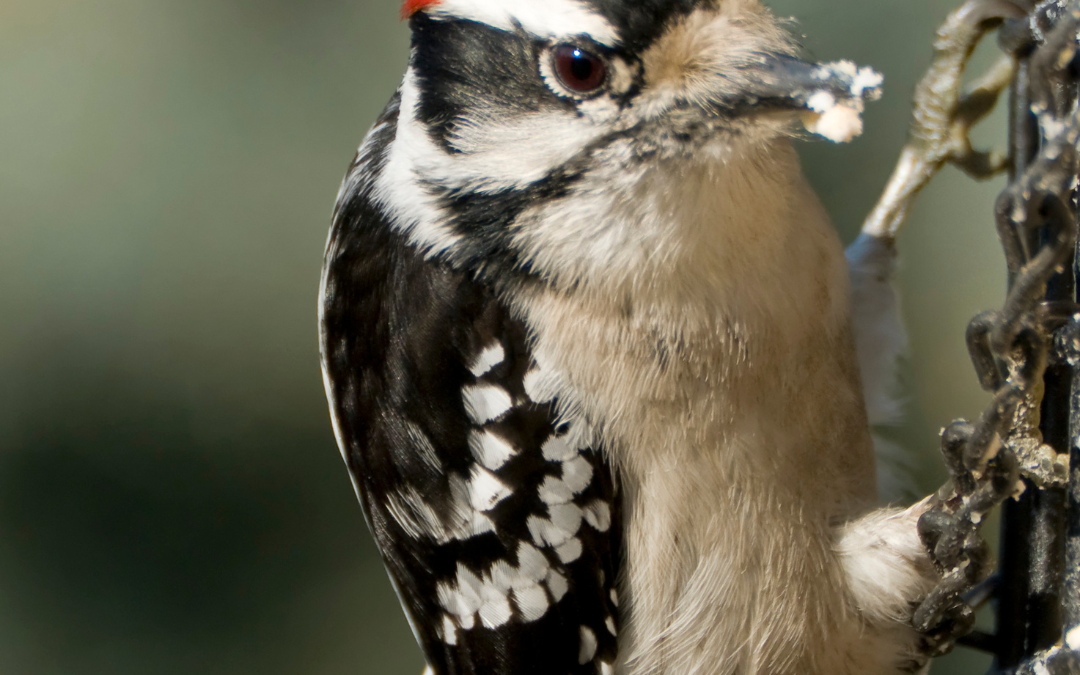
by Wildwood Outdoor Living | Oct 11, 2023 | news
Birdwatching can be a delightful and rewarding hobby, but it’s important to ensure that our feathered friends have the right kind of sustenance. Choosing the right bird feeder is crucial in attracting a diverse range of birds to our gardens or outdoor spaces. By providing them with the appropriate feeding stations, we not only help them thrive during winter and fall months, but also create an enchanting environment for ourselves. Follow these top 5 bird feeding mistakes, to ensure your bird feeders are ready and reliable for your feathered friends this fall.
Mistake #1: Using Incorrect Bird Feeders or Feed

It’s important to create a welcoming environment for our feathered friends by providing them with the right bird feeders and feed. However, one common mistake that many people make is using incorrect bird feeders or feed, which can deter birds from visiting our yards.
When selecting a bird feeder, it’s crucial to consider the types of birds we want to attract. Different birds have different feeding habits and preferences. Some may prefer platform feeders, while others may be more attracted to tube or hopper feeders. By understanding the specific needs of the birds in our area, we can choose an appropriate feeder that accommodates their feeding styles.
Equally important is choosing the right bird feed. Birds have varying seed preferences, and offering a variety of seeds can help attract a diverse range of species. For example, sunflower seeds are popular among many backyard birds, while nyjer seeds are favored by finches. By providing a mix of seeds that cater to different bird species, we can increase the chances of attracting a wider array of beautiful visitors.
Taking the time to educate ourselves about the specific needs and preferences of local birds will ensure that we select suitable bird feeders and feeds. By doing so, we create an inviting space where our avian friends can flourish and delight us with their presence.
Mistake #2: Placing Feeders in Inconvenient or Unsafe Locations

When it comes to bird feeder placement, ensuring convenience and safety is crucial for our feathered friends. Placing feeders in inconvenient or unsafe locations can lead to unintended consequences and potential harm.
One common mistake is placing feeders in areas that are difficult for birds to access. This could include spots that are too high, too low, or obstructed by obstacles such as branches or fences. By considering the accessibility of the feeder, we can make it easier for birds to enjoy their meals without unnecessary struggle.
Equally important is selecting a safe location that minimizes the risk of predators. Placing feeders near dense shrubs or trees can provide cover for birds while they eat, making it harder for predators to approach unnoticed. Additionally, keeping feeders away from windows and reflective surfaces can prevent bird collisions and injuries.
We must also be mindful of keeping cats away from feeders. Cats are natural hunters and pose a significant threat to birds. Placing feeders in locations where cats cannot easily access them, such as on poles with baffles or in elevated areas out of reach, helps protect our avian visitors from potential harm.
By being conscious of these considerations and avoiding the mistake of placing feeders in inconvenient or unsafe locations, we can create a welcoming environment for birds while ensuring their well-being and enjoyment at our feeding stations.
Mistake #3: Using Low-Quality Bird Seed or Not Offering a Variety of Foods

It’s important to provide our feathered friends with high-quality bird seed and a diverse range of food options. Using low-quality bird seed can have negative effects on the health and well-being of the birds that visit our feeders.
Birds require a balanced diet to thrive, just like any other living creature. By offering a variety of foods, we can attract different species and provide them with the nutrients they need. This includes not only seeds but also fruits, nuts, and insects.
Suet feeders are another great option to consider. Suet is a high-energy food that is especially beneficial during colder months when birds need extra fuel to keep warm. By incorporating suet into our feeding routine, we can attract a wider variety of birds and support their overall health.
Additionally, consider adding nyjer seed to your offerings. This tiny black seed is particularly loved by finches and other small songbirds. It provides them with essential oils and proteins that are vital for their well-being.
By avoiding low-quality bird seed and providing a diverse array of foods in our feeders, we can create an inviting environment for birds while ensuring they receive the nutrition they need to thrive.
Mistake #4: Neglecting Regular Cleaning and Maintenance of Bird Feeders

Regular cleaning and maintenance of bird feeders is crucial for creating a safe and healthy environment for our feathered friends. Neglecting this important task can lead to the spread of diseases among birds, which can be detrimental to their well-being.
Cleaning bird feeders not only helps to prevent the accumulation of mold, bacteria, and other harmful contaminants but also ensures that the food remains fresh and appealing to birds. By regularly cleaning and disinfecting the feeders, we can minimize the risk of disease transmission and create a welcoming space for our avian visitors.
It is important to remember that birds rely on these feeders as a source of sustenance, especially during times when natural food sources may be scarce. By neglecting regular cleaning and maintenance, we are potentially putting their health at risk.
Taking the time to clean bird feeders not only benefits the birds but also provides us with an opportunity to observe them up close and appreciate their beauty. It is an act of compassion towards these creatures who bring joy and life to our surroundings.
Let us not overlook the importance of cleanliness in our bird feeding areas. By incorporating regular cleaning and maintenance practices into our routine, we can help prevent disease spread among birds while fostering a vibrant ecosystem in our own backyard.
Mistake #5: Forgetting to Provide Water and Shelter for Birds

It is crucial that we create a safe and welcoming environment for our feathered friends. One common mistake that people make is forgetting to provide water and shelter for birds. By offering bird baths and nesting boxes, we can ensure that they have access to clean water and a secure place to rest and raise their young.
Bird baths are not only a source of hydration for birds, but they also provide an opportunity for them to bathe and keep their feathers clean. It is essential to regularly clean and refill these baths to maintain a healthy environment for our avian visitors.
Additionally, nesting boxes play a vital role in providing birds with suitable shelter. These boxes mimic the natural cavities found in trees, offering protection from predators and harsh weather conditions. By placing these boxes strategically around our outdoor spaces, we can encourage birds to nest and thrive in our surroundings.
Let us not forget the importance of creating a safe haven for birds by providing water sources like bird baths and offering them suitable shelter through nesting boxes. Together, we can contribute to the well-being of our feathered friends while enjoying their presence in our lives.
By being aware of these common feeding mistakes and taking proactive measures to avoid them, we can truly enhance our backyard birding experience while promoting the well-being of our feathered companions. Let us continue to enjoy their presence with compassion and responsibility.
Have a suggestion or question?
Let us know at info@wildwoodoutdoorliving.com.
Sign up here for more blogs dedicated to better gardening!
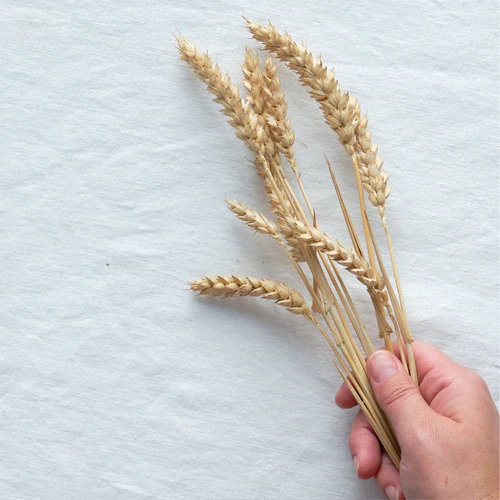
by Wildwood Outdoor Living | Sep 6, 2023 | news
Fall rye, scientifically known as Secale cereale, is a remarkable cereal grain that serves as an exceptional soil builder. Its unique characteristics make it a valuable asset for agricultural practices in various climates. Notably, fall rye exhibits rapid growth during the autumn season and has the ability to withstand harsh winter weather conditions even in zone 3.
Fall Rye Growth
One of the key advantages of fall rye is its vigorous growth in the spring. However, it is important to manage its height before it reaches 30cm (12″) to ensure easy incorporation into the soil. As it grows taller and reaches 1m (3′), turning under or cutting back becomes more challenging.
Fall Rye Soil Benefits
Furthermore, fall rye boasts extensive root systems that contribute to its soil-building capabilities. These roots penetrate deep into the ground and help improve soil structure by enhancing water retention and nutrient availability for other crops.
In conclusion, fall rye proves to be an invaluable addition to any agricultural system due to its ability to build healthy soils. Its resilience against winter weather combined with rapid spring growth makes it a versatile choice for farmers seeking sustainable solutions for their fields.
FALL RYE USES

Fall Rye Recipes
In the culinary world, fall rye shines as an ingredient with its nutty flavor and hearty texture. It can be ground into flour to make breads and pastries or cooked whole as a side dish or salad ingredient. Fall rye’s versatility extends to soups, stews, and even desserts like puddings or porridges.
Fall Rye Décor
When it comes to home décor, fall rye can be used in various ways to add warmth and texture. Its dried stalks can be arranged in vases or woven into wreaths for a charming autumnal display. Additionally, fall rye can be incorporated into table centerpieces or used as filler in decorative baskets for a natural and earthy feel.
Fall Rye Nutrients
Beyond its culinary uses and decorative appeal, fall rye also offers numerous nutritional benefits. Packed with fiber, vitamins B and E, magnesium, and iron, incorporating fall rye into your diet can support digestion, heart health, and overall well-being.
HOW TO GROW FALL RYE

Timing
To achieve the best results, it is recommended to plant fall rye approximately 6-8 weeks before the first frost date. This timing allows the seeds to germinate and establish themselves before winter sets in. In some cases, rye seeds can even germinate as late as early November.
Tip: Alternatively, a spring crop of rye can be planted during the months of March through April. This provides ample time for growth and development before the onset of summer.
Zone
Rye is known for its resilience and ability to withstand harsh climates. It is classified as hardy to Zone 3, which means it can tolerate temperatures as low as -40°C (-40°F).
Caring for Fall Rye
In addition to proper watering, providing regular care and attention throughout each stage of growth is essential for maximizing yield potential. Regularly monitor for pests or diseases that may pose a threat to your crop’s health and promptly address any issues that arise.
With patience and dedication, you can look forward to reaping the rewards of your laborious efforts as you enjoy a bountiful harvest of this nutritious grain. Whether you plan to use rye in baking, brewing or as a cover crop to enrich your soil, the possibilities are endless.
Have a suggestion or question?
Sign up here for more blogs dedicated to better gardening!
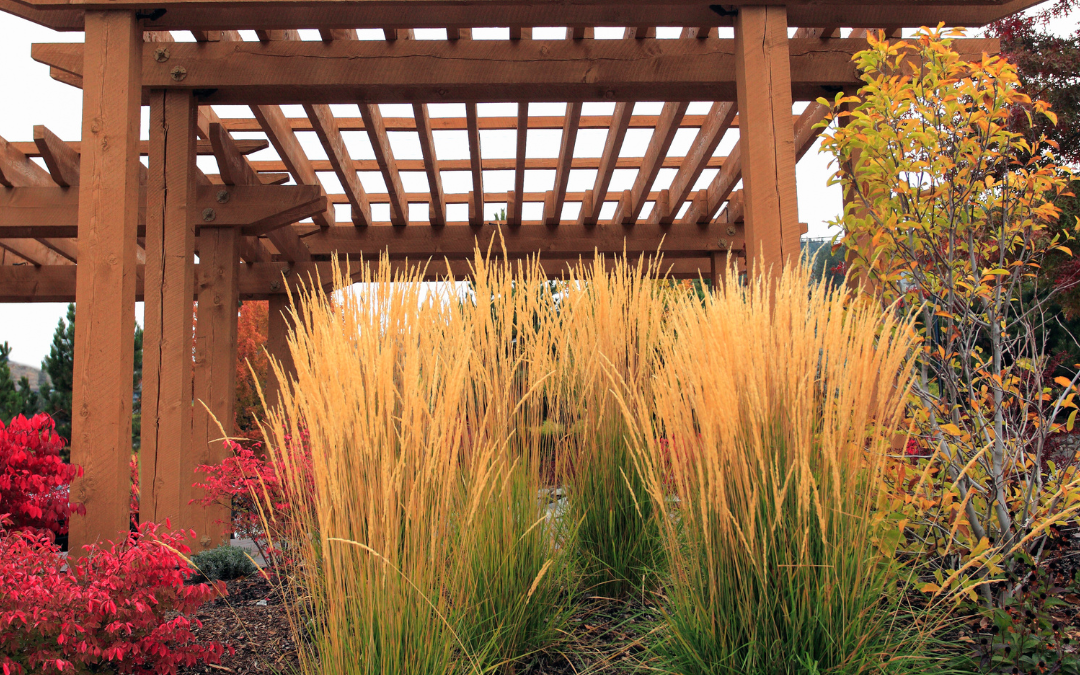
by Wildwood Outdoor Living | Aug 29, 2023 | news
As September approaches, it’s time to embrace the cool and cozy vibes. This also presents an opportunity to grow a variety of crops in your garden that are perfect for making soups, stews, and other comforting dishes. If you’re considering starting a fall garden this year, it’s important to take care of a few end-of-season chores before getting started. Read this weeks Blog 2023 September Gardening Tips, to learn more.
September Lawn & Pond Maintenance

-
Don’t miss out on the opportunity to nourish your fish before winter sets in! It’s crucial to give them the right nutrients during this time. Consider using high-quality staple fish food, such as Aquascapes’ premium options, to ensure their health and well-being throughout the colder months.
-
Keep the beneficial bacteria flowing into your system on a weekly basis and experience the numerous advantages it brings. Regularly introducing these helpful microorganisms will boost your overall health and enhance the functionality of your system. For an extra boost, we recommend Aquascape Benefitial Bacteria which provides over seven different concentrated beneficial bacteria and is completely safe for fish, plants, pets, and wildlife.
-
For optimal results, it is advisable to sow new lawns during cooler temperatures of the day. This helps to ensure that the seeds have a better chance of germinating and taking root. Prior to sowing, it is recommended to nourish the soil with turf starter for enhanced growth and establishment.
-
To maintain a healthy and vibrant lawn, it is important to consistently cut the grass and water it adequately. Aim to mow your lawn at least once a week, ensuring to trim it by at least one inch each time. Additionally, make sure you provide sufficient hydration through regular watering sessions.
-
For a healthy lawn that can withstand the winter, it’s important to keep it clean and free from any obstructions such as toys, leaves, and tools. By doing so, you allow your lawn to receive the necessary nutrients it requires for survival during the colder months.
September Plant Tasks

-
Transform your September garden into a colorful paradise by planting an array of stunning annual flowers. From the vibrant begonia and zinnias to the charming snapdragons and sweet alyssum, the options are endless. Embrace the beauty of nature with celosia, pansies, dianthus, petunias, nasturtiums, calendula, chrysanthemums, and many more breathtaking varieties.
-
Make sure to keep an eye out for newly arrived fresh vegetable and herb starters. Now is a wonderful opportunity to stock up on these young plants.
-
Get ready for a vibrant spring garden by pre-ordering your spring-flower bulbs today! Planting bulbs in the fall ensures beautiful blooms when the weather warms up. Take advantage of this opportunity to plan ahead and secure your favorite flowers for next season.
-
Bring houseplants inside, but make sure to inspect them for any signs of bugs! This is crucial because pests can easily hide on plants and multiply rapidly indoors. By taking the time to thoroughly check your plants, you can identify any potential infestations early on and take appropriate measures to prevent the spread of pests in your home.
-
Fall is an optimal season for planting shrubs and trees due to a few key reasons. Firstly, the cooler temperatures allow the plants to establish their root systems before the onset of winter. This promotes sturdy growth and reduces transplant shock. Additionally, fall typically brings more rainfall, providing natural hydration and encouraging healthy root development. By planting in this season, you give your shrubs and trees ample time to acclimate to their new environment, ensuring a higher rate of survival come springtime.
-
When tending to your flowerbeds, consider preserving the beauty of your blooms by either leaving them intact for dried flowers or cutting them and hanging them up. This way, you can enjoy their vibrant colors and delicate petals long after they have been picked.
-
To ensure a vibrant and thriving garden, it is advisable to continue planting new perennials until early fall. By doing so, you allow sufficient time for these young plants to establish themselves before the arrival of winter. This proactive approach will help promote their growth and enhance their ability to withstand the challenges of the colder months ahead.
-
Lift onions, dry and store.
-
Avoid watering potatoes that are intended to be stored for an extended period of time. Late-storing potatoes, in particular, should not be watered as it can negatively impact their long-term storage quality.
September Gardening Miscellaneous & More
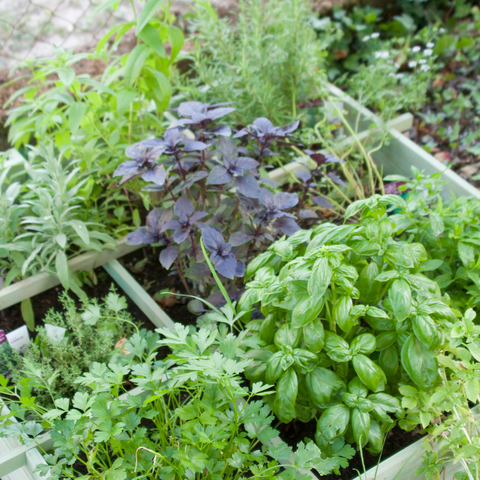
-
If you want to enhance the quality of your soil, there are a few simple steps you can take. Begin by clearing away any dead leaves and debris from your garden bed. This will create a clean slate for new growth. Next, consider spreading compost or manure over the soil. These organic materials not only enrich the soil with essential nutrients but also improve its overall health, leading to a successful growing season ahead.
-
To improve the fertility of your garden soil, consider planting fall rye in the areas where you have finished harvesting. Fall rye serves as a valuable green manure, adding organic matter and nutrients back into the soil. This practice helps to enrich the soil for future growth and can contribute to healthier plants in subsequent growing seasons.
-
Turn over the compost for the last time this year.
-
To grow more of the plants you desire, you have the option to either harvest and save their seeds or propagate them through other methods. Harvesting seeds involves collecting mature seeds from your plants and storing them properly until you are ready to sow them. On the other hand, plant propagation refers to the process of creating new plants by using cuttings, division, layering, or other techniques. By taking advantage of these methods, you can easily expand your plant collection and ensure a sustainable supply of the specific plants you want.
-
It is advisable to regularly check for the presence of Japanese Knotweed in your surroundings. This invasive plant can cause significant damage to properties and infrastructure if left untreated. If you identify any signs of Japanese Knotweed, it is crucial to take appropriate measures for its control and treatment to prevent further spread and potential harm.
-
One important task to prepare your garden beds for the winter months is weeding. Removing any weeds from the beds can help prevent them from spreading and taking over during the dormant season. It also allows your plants to receive maximum nutrients and reduces competition for water and sunlight. Taking the time to weed your garden beds before winter sets in will ensure a healthier, more vibrant garden come springtime.
-
In certain regions, you can directly sow leafy greens, peas, beans, onions, and broccoli. This means planting the seeds directly into the ground or containers without starting them indoors first.

Have a suggestion or question?
Sign up here for more blogs dedicated to better gardening!
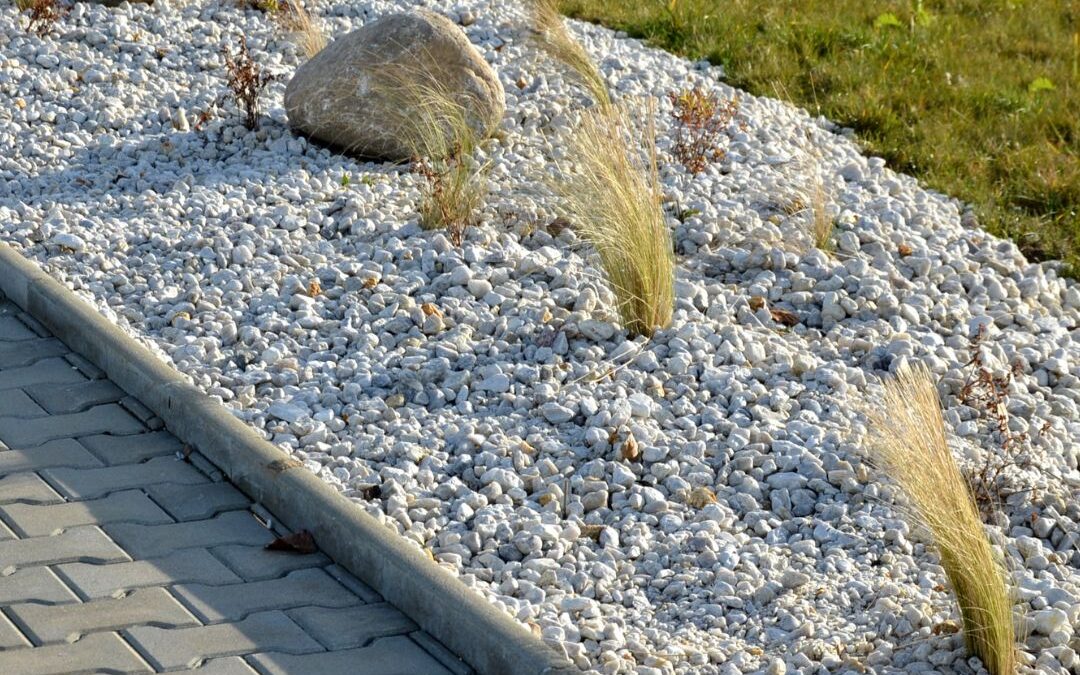
by Wildwood Outdoor Living | Aug 22, 2023 | news
With the increasing spread of wildfires, our President Gord Nickel wanted to share everything he knows about ‘Fire Resistant Gardening’ to help you do your best at home. Tune into the latest episode of Get Up and Grow, to learn a few key practices that can help protect your garden and surrounding areas or read along in this week’s blog Fire Resistant Gardening to learn more.
Pruning
By regularly pruning your garden, you can significantly reduce the amount of fuel available for fires to spread. Dead branches tend to be drier and more flammable, making them particularly susceptible to catching fire. Removing these branches not only eliminates potential fire hazards but also improves the overall health and appearance of your plants.
TIP: Overgrown branches, especially those that are close to structures or power lines, can increase the risk of fires spreading rapidly. By trimming back these branches, you create a buffer zone that helps prevent flames from reaching nearby buildings or infrastructure.
Mulching
Another technique to consider is rock mulching. Using rocks as a ground cover can help create a fire break and prevent flames from reaching your plants or home.
Rock mulching into your landscaping design can serve as an effective technique for creating a fire break and safeguarding your plants and home from wildfire risks. Its ability to reduce fuel for fires, conserve soil moisture, require minimal maintenance efforts, and enhance the visual appeal make it an attractive option for homeowners seeking both practicality and aesthetics in their outdoor spaces.
Low Mow
Regularly mowing your lawn can play a crucial role in mitigating the spread of fires. By keeping the grass short, you reduce the chances of it catching fire. Additionally, shorter grass acts as a natural protective barrier, creating a buffer zone between your garden and potential flames. This simple maintenance task can contribute to ensuring the safety of your property during fire emergencies.
Fire Resistant Plants
When it comes to creating a fire-resistant landscape, choosing the right plants is crucial. Opting for plants with high moisture content and low resin or oil content can significantly reduce the risk of ignition during a fire. These types of plants are less likely to ignite quickly, allowing valuable time for firefighting efforts and minimizing the spread of flames.
Get Up and Grow: Fire Resistant Gardening
By integrating these practices into your gardening routine, you can establish a fire-resistant environment that plays a crucial role in safeguarding your property against potential wildfires. For more information and help, check out the latest episode of Get Up and Grow below.
Have a suggestion or question?
Let us know at info@wildwoodoutdoorliving.com.
Sign up here for more blogs dedicated to better gardening!



















